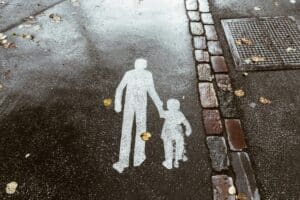When an adolescent is struggling with mental health issues, substance abuse, or behavioral challenges, a treatment program can provide the structured support necessary for recovery. Understanding what to expect during an adolescent treatment program can ease concerns for both the young person and their family, making the process less daunting and more manageable.
Initial Assessment and Admission
The journey begins with an initial assessment, a crucial step that sets the foundation for the entire treatment program. During this assessment, mental health professionals conduct thorough evaluations to understand the adolescent’s specific needs. This may include psychological testing, medical history reviews, and discussions about the adolescent’s emotional and behavioral patterns.
The goal of the assessment is to create a personalized treatment plan that addresses the unique challenges faced by the adolescent. This plan outlines the therapeutic approaches, goals, and timelines, ensuring that the treatment is tailored to the individual rather than a one-size-fits-all solution.
Once the assessment is complete, the admission process begins. This involves orientation sessions where the adolescent and their family are introduced to the program’s structure, rules, and expectations. Understanding these guidelines from the outset helps adolescents acclimate to the new environment, reducing anxiety and fostering a sense of safety.
Therapeutic Interventions
Therapeutic interventions are the core components of an adolescent treatment program. These interventions are designed to address the underlying issues contributing to the adolescent’s struggles and to equip them with the skills needed for long-term recovery.
Individual Therapy
One-on-one therapy sessions with a licensed therapist are central to the treatment process. These sessions provide a safe space for the adolescent to explore their thoughts, feelings, and behaviors. Cognitive-behavioral therapy (CBT) is commonly used, helping adolescents identify and challenge negative thought patterns. Depending on the adolescent’s needs, other therapeutic modalities, such as dialectical behavior therapy (DBT) or trauma-focused therapy, may also be incorporated.
Group Therapy
Group therapy allows adolescents to connect with peers facing similar challenges. Sharing experiences in a group setting fosters a sense of belonging and reduces feelings of isolation. Group sessions often focus on topics such as coping strategies, communication skills, and peer relationships. The group dynamic can also help adolescents practice social skills in a supportive environment, which is essential for building healthy relationships outside of treatment.
Family Therapy
Family involvement is a crucial aspect of adolescent treatment. Family therapy sessions address dynamics that may contribute to the adolescent’s difficulties and work to improve communication and relationships within the family. This collaborative approach ensures that the adolescent has a strong support system at home, which is vital for sustained recovery.
Experiential Therapy
Many treatment programs incorporate experiential therapies, such as art therapy, music therapy, or equine therapy. These activities provide alternative ways for adolescents to express their emotions and explore their identity. Experiential therapy can be particularly beneficial for those who struggle to articulate their feelings through traditional talk therapy.
Educational Support
Maintaining academic progress is important for adolescents in treatment. Most programs offer educational support, including tutoring and structured study time, to ensure that the adolescent can keep up with their schoolwork. This support helps reduce the stress related to falling behind academically and ensures a smoother transition back to school after treatment.
Daily Routine and Structure
A key element of adolescent treatment programs is the structured daily routine. Structure provides a sense of stability and predictability, which is especially important for adolescents who may feel overwhelmed by their emotions or behaviors.
The daily schedule typically includes a balance of therapeutic sessions, educational activities, recreational time, and personal reflection. This structure helps adolescents develop time management skills, establish healthy routines, and build a sense of responsibility. Regular mealtimes, consistent sleep schedules, and designated times for exercise and relaxation contribute to overall well-being.
Having a structured day also minimizes idle time, which can be a trigger for negative behaviors or thoughts. By keeping adolescents engaged in constructive activities, the program helps them develop healthier habits and coping mechanisms.
Building Life Skills
Beyond addressing immediate mental health or behavioral issues, adolescent treatment programs aim to equip young people with the life skills they need to succeed in the long term. These skills are critical for helping adolescents navigate the challenges they will face after leaving the program.
Emotional Regulation
Learning to manage emotions is a key focus of treatment. Adolescents are taught techniques such as mindfulness, deep breathing, and cognitive reframing to help them handle stress, anger, and anxiety in healthier ways. Mastering these skills reduces the likelihood of relapse and prepares them for the emotional demands of daily life.
Communication and Social Skills
Effective communication is essential for building and maintaining healthy relationships. Adolescents in treatment practice assertiveness, active listening, and conflict resolution. These skills are vital not only for personal relationships but also for future professional interactions.
Decision-Making and Problem-Solving
Adolescents often struggle with impulsivity and poor decision-making, particularly when under stress. Treatment programs teach strategies for making thoughtful, informed decisions and solving problems in constructive ways. These skills help adolescents avoid risky behaviors and make choices that support their well-being.
Self-Care and Independence
Developing a routine of self-care is crucial for maintaining mental and physical health. Adolescents learn about nutrition, exercise, sleep hygiene, and other aspects of self-care. Additionally, they are encouraged to take responsibility for their daily tasks, fostering a sense of independence that will serve them well after treatment.
Transition and Aftercare
The final phase of an adolescent treatment program focuses on preparing for the transition back to everyday life. This phase, often referred to as aftercare, is crucial for maintaining the progress made during treatment.
Creating a Discharge Plan
Before leaving the program, a detailed discharge plan is developed. This plan outlines the steps for continuing care, including follow-up therapy sessions, support groups, and medication management if necessary. The discharge plan serves as a roadmap for the adolescent and their family, helping them navigate the challenges of re-entry into daily life.
Building a Support Network
Continued support is essential for long-term success. Treatment programs help adolescents and their families identify and establish a support network, which may include therapists, support groups, mentors, and family members. Having a reliable support system in place can make a significant difference in preventing relapse and promoting sustained recovery.
Ongoing Skill Development
Aftercare often includes continued skill development, either through outpatient therapy or community programs. Adolescents are encouraged to keep practicing the skills they learned in treatment, such as emotional regulation, communication, and self-care. Continued reinforcement of these skills helps solidify them as part of the adolescent’s daily routine.
Conclusion
Understanding what to expect during an adolescent treatment program can help families approach the process with greater confidence and clarity. From the initial assessment to the transition back to everyday life, these programs are designed to provide comprehensive support, therapeutic interventions, and life skills that pave the way for long-term recovery. By participating actively in the treatment process and utilizing the resources provided, adolescents and their families can achieve meaningful, lasting change.




